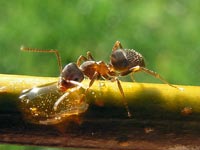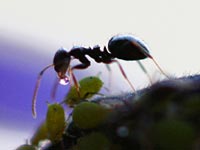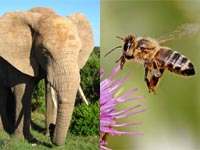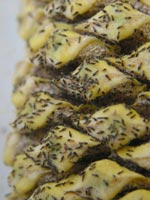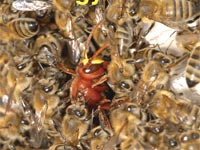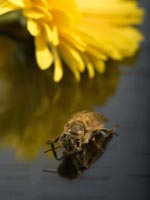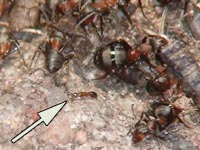 Stories about cavefish are like buses – you get a seeming infinity of nothing and then loads turn up at once. Just 10 posts ago, I wrote about a study which found that you can restore sight to blind cavefish by cross-breeding individuals from different caves.
Stories about cavefish are like buses – you get a seeming infinity of nothing and then loads turn up at once. Just 10 posts ago, I wrote about a study which found that you can restore sight to blind cavefish by cross-breeding individuals from different caves.
The different populations lost their eyes through changes to different sets of genes and in the hybrids, each faulty version was paired with a working one. As a result, the hybrids had fully formed and functional eyes despite having lived in darkness for a million years.
Now, a new study shows that the larvae of blind cavefish can detect light (or more accurately, shadows) too, even without working eyes. They can detect shadows and seek shelter in them, just like the sighted surface-dwelling versions of the same species. The key to the behaviour is their pineal gland, a small organ that regulates the body clock and, in some species, is sensitive to light.
I wrote up the research for Nature News; mosey on over for the full story and some possible explanations for why the fish’s pineal has retained the ability to detect light, even though its eyes have been lost.
Some other things to mention:
- The new edition of the Tangled Bank carnival is up at the Inoculated Mind.
- Nature picked up my David Attenborough interview for its Books and Arts section. My old lab colleagues from my PhD days would bust a gut laughing if they knew that I’d finally got my name into Nature…
- Nature Network’s published an interview I did with Alfried Vogler, who studies beetles at Imperial College. Last year, Vogler carried out the most comprehensive ever study on the evolutionary relationships between the beetles, the most successful group of animals on the planet.
Filed under: Animal behaviour, Animal kingdom, Carnivals, Fish, Insects & arthropods | Tagged: beetles, blind cavefish, cavefish, David Attenborough, pineal gland | Comments Off on Blind cavefish not so blind, Beetlemania and other tidbits…







 Acacias are under constant attack from hungry animals, from tiny caterpillars to towering giraffes. In response, many species like the
Acacias are under constant attack from hungry animals, from tiny caterpillars to towering giraffes. In response, many species like the 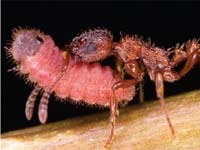 The Alcon blue is a
The Alcon blue is a 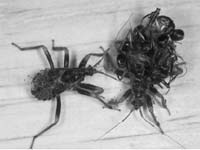 Many species disguise themselves through their behaviour rather than their bodies; like human soldiers in camouflage gear, they don special suits to remain inconspicuous.
Many species disguise themselves through their behaviour rather than their bodies; like human soldiers in camouflage gear, they don special suits to remain inconspicuous. 